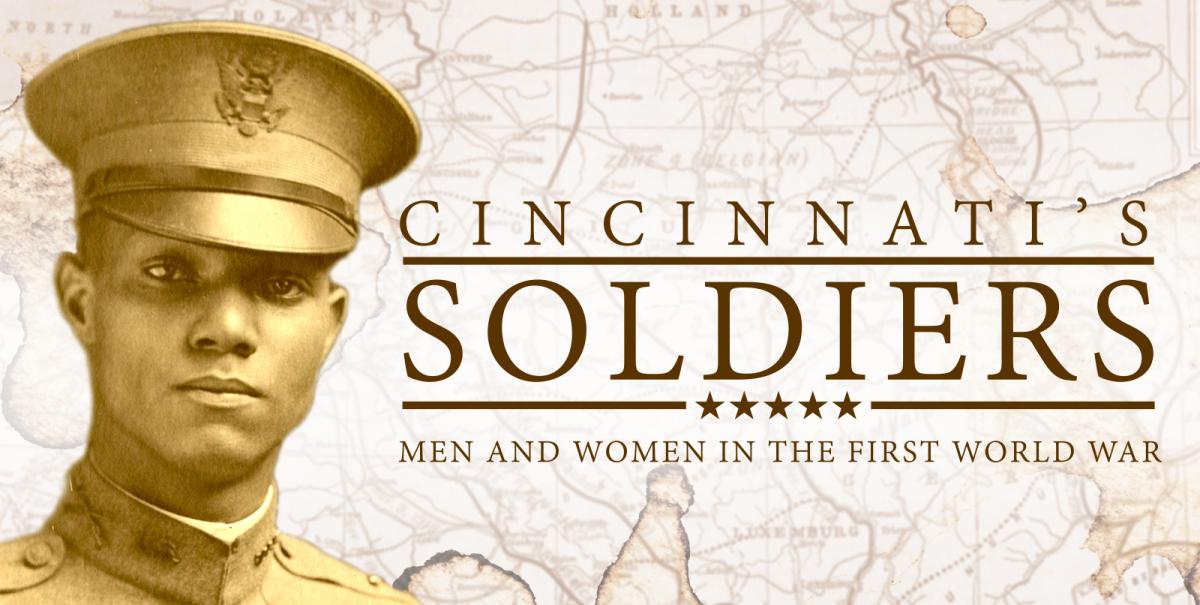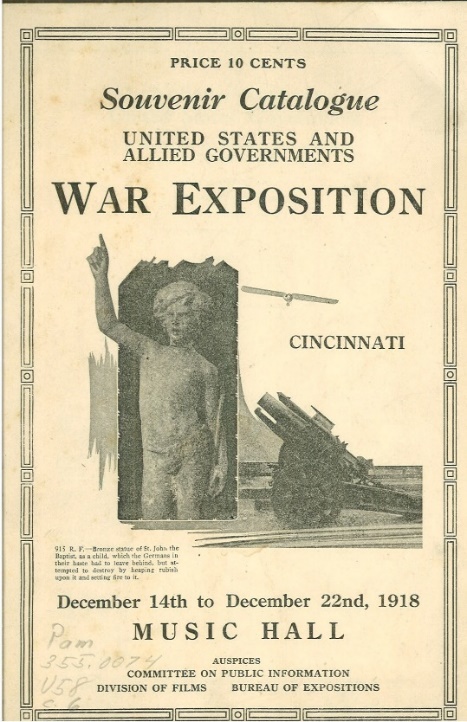
The United States entered World War I in April 1917, three years after the Great War began. President Woodrow Wilson declared in his War Message to Congress that the country’s objective was “to vindicate the principles of peace and justice in the life of the world.” With this message resonating in Americans across the country, citizens participated in many volunteer efforts at home and abroad, including traveling across the world in the U. S. armed forces. Cincinnati’s Soldiers: Men and Women in the First World War is an exhibition that shares the stories of a few of these local freedom heroes.
The Allied War Exposition
The Allied War Exposition was a World War I exhibit that traveled by special train throughout the United States from 1917 until 1919. This exposition, or exhibit, illustrated trench warfare, weapons, new technologies, medical treatments and other war activities of the Allied Powers. The exhibition also featured captured weapons and equipment from Germany and the Central Powers. It was sponsored by the U.S. Government Committee on Public Information, and traveled to major cities, including Los Angeles, California; Chicago, Illinois; Waco, Texas; and Cleveland and Cincinnati, Ohio.
In Cincinnati, the Allied War Exposition was hosted at Music Hall from December 14 until December 22, 1918. Around 6,000 portraits of local servicemen and women were displayed by the Cincinnati Committee. After the Exposition in Cincinnati ended, the Committee returned the loaned photographs, and suggested that families donate the photographs, or a copy, to the Historical and Philosophical Society of Ohio. Today, about 3,000 of these portraits make up the WWI Servicemen Photograph Collection (Special Collection 77) at the Cincinnati History Library and Archives at Cincinnati Museum Center.
The individuals pictured in this exhibition contributed to the war effort in a range of ways, but not everyone had equal opportunities to serve their country. Opportunities varied based on race and gender. Men in the Army were eligible for combat duty and commissions as officers, but most enlisted African American men were restricted to manual labor positions. Women were employed as combat nurses and volunteered for a variety of other relief efforts, but they commonly did not have the same authority as men. Even faced with these injustices, many African Americans and women saw wartime service as a chance to show they were worthy of full citizenship. They served to demonstrate their worth. These men and women made unique impacts to the Allied victory, which contributed to a fight for freedom that changed the world.
This program is presented as part of “Cincinnati Remembers WWI,” a citywide series of events commemorating the centenary of the First World War and anticipating Cincinnati Opera's production of the Pulitzer Prize-winning opera Silent Night in July 2014.

